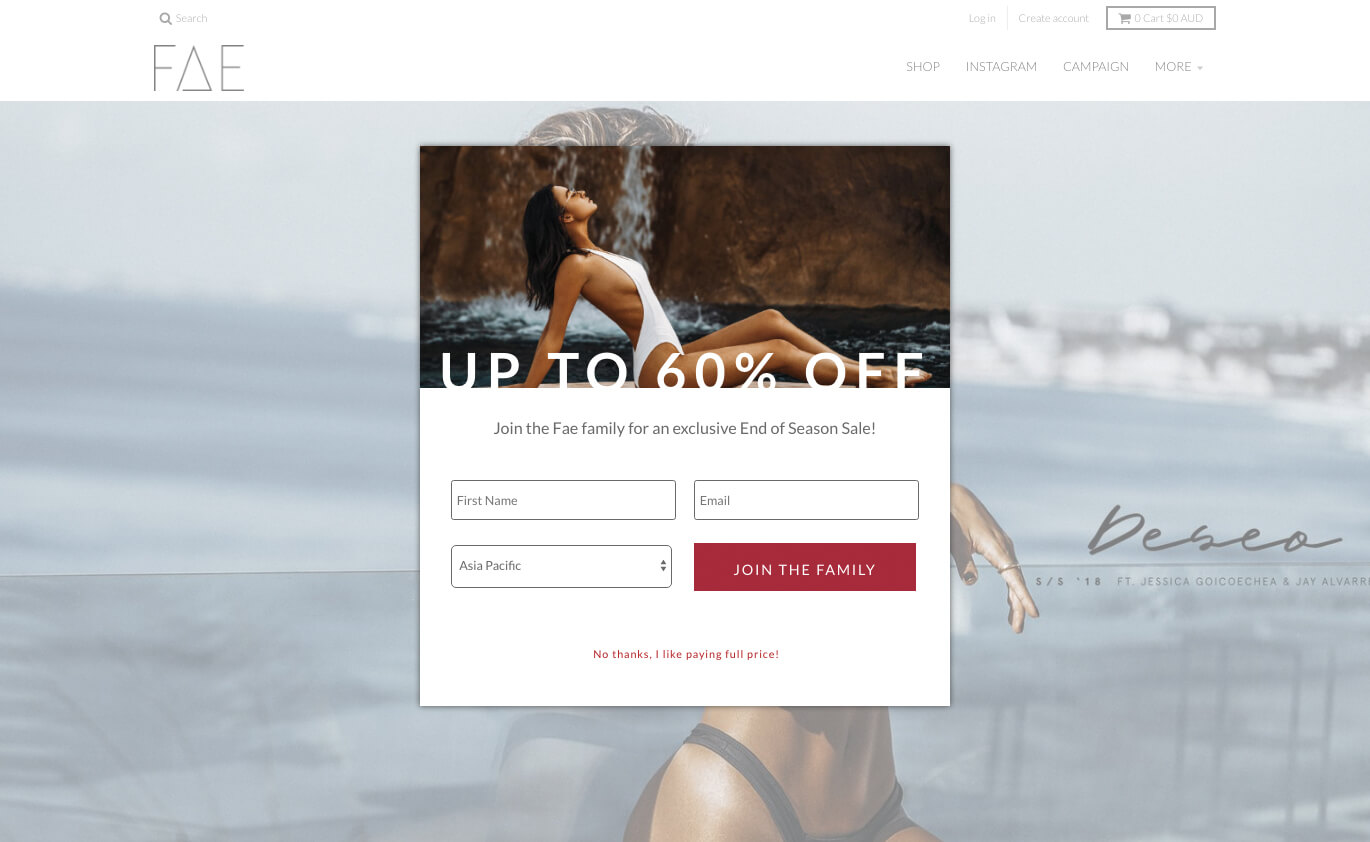A quality email subscriber list is an incredibly valuable asset for your business. Especially for ecommerce.
It’s a direct communication channel between you and your customers and leads. More importantly; you’re completely in control. Your marketing strategies aren’t at the mercy of algorithm changes like they are on social platforms.
Plus, with so many new technologies and platforms available, you can target and customise your messaging on an incredible level. Email marketing allows for incredibly dynamic content – making it one of the best and most valuable ways for customers to keep up to date with the brands they love.
In fact, Dotmailer reported that for every dollar invested in email, you net a 32 dollar return!
But as great as email is, there is a slight problem. Email marketing is dependant on an audience. And (unlike social media) you can’t just purchase the eyes you need on your ads. Email audiences must be built from the ground up.
This takes time. But there are a few strategies you can use to speed up the process. Let’s take a look at our favourite lead capture strategies for ecommerce.
Landing Pages
Social media is a a great way to run your outbound marketing. Facebook, for instance, allows you to fine tune your audience based on interests, gender, location and much more – making it the perfect way to put your content in front of the right people. But as clever as Facebook might be, you’re still unable to capture email addresses via their advertising platform.
Not to worry! That’s why we have ‘Landing pages’.
A landing page is a standalone page on your website, designed as an arrival gate for customers or leads.The benefit of these pages, is that you can customise them as you please to perfectly match the source that’s bringing visitors in.
That’s really where the beauty of landing pages lies: they can be tailor made for each campaign. Rather than sending traffic straight to your homepage (which is full of navigation links and other distractions), you can send them to a new page perfectly designed to convert.
Let’s look at one example use case.
You might create a refined target audience, and run a set of Facebook ads offering 20% off your best selling product for a limited time. This ad, when clicked, links leads back to a dedicated landing page that continues to show off the product in question, and promises to email them out a discount code if they leave their email. Hey presto. You’ve gained a subscriber (and likely made a sale).
We ran a similar campaign for our client, Vehicle Modifications Network, and the results were incredible!
Pop ups
Landing pages are great for converting people from specific sources. But what about all those visitors who found your website through an organic search? How best to turn that huge portion of traffic into subscribers?
We’ve written about pop ups previously. Despite the bad reputation they can receive when implemented poorly, their conversion rate and return on investment is astronomical. Especially when you make the most out of the targeting functionality the more modern platforms and services now have built in.
Just Uno and Opt-In Monster are two great platforms that allow you to really fit your conversion marketing to the right visitors. You can even synchronise them with your online store and other analytics services – allowing you to target pop ups to customers based on their past purchase history, website sessions and behaviour, demographics, and more.
You might like to put a range of different pop ups on your website. One on your product pages, for example, might only appear to visitors on their second visit. If visitors are returning to look at a product a second time, it’s likely they’ll only require a small discount or other incentive to purchase – which, or course, you can trade for an email address. You can take this opportunity to drive sales, and capture subscriber data.
You might also like to put another pop up on your blog pages. ‘Exit intent’ pop ups are perfect here, as they don’t appear until a reader goes to leave the page. This means A) you won’t interrupt their enjoyment of your content, and B) you can take the opportunity to offer to keep them updated with any future posts you publish.
Embedded forms
Another great way to convert your website traffic to subscribers is with permanent, embedded forms. These forms are built into strategic locations on your website (i.e; your contact page, the end of blog posts, etc), and can be a great tool for generating subscription.
While not as dynamic as pop-ups, embedded forms can be a fantastic tool for generating further data entry from your customers and leads (particularly on smaller devices, if you don’t want interrupt the mobile experience). Pop ups, for example, are effective when you’re asking for a first name and email address. But if you’re looking for a little more information on your subscribers (gender, job title, age, etc) you’d probably have better luck with an embedded form.
These larger forms can be built easily into any WordPress website with Klaviyo, Mailchimp and other tools. These can then feed information directly into your CRM or email marketing platform for use in your marketing segmentation.
But not all embedded forms need to be complicated! We’ve had great success with small forms embedded into the header of some of our clients’ websites.
But be sure you always remember: these are permanent additions to your website, so you need to ensure you don’t compromise the user experience! Ensure they don’t take up too much of your website’s precious screen real estate, and that they have simple, clear messaging, a strong call to action and are completely on-brand.
If you’d like to discuss how to tailor fit a lead capture strategy for your business, get in touch today! One of our specialists would love to help you out.



